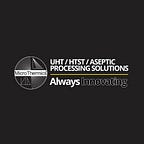Sterilization Methods in the Lab: How to Choose the Right Equipment for Your Needs
In any laboratory, maintaining a sterile environment is essential for producing accurate, reliable results. Contaminated lab equipment can compromise experiments, leading to false data, costly mistakes, and potentially dangerous outcomes, especially in fields like microbiology, biochemistry, and pharmaceuticals. The process of sterilizing lab equipment involves using various methods to eliminate all forms of microbial life, including bacteria, viruses, fungi, and spores. With several sterilization techniques available, choosing the right equipment for your specific needs can be challenging. This article will explore the most common sterilization methods used in labs and guide you in selecting the appropriate equipment to ensure the integrity of your work.
Understanding Different Sterilization Methods
There are several methods available, each with its own advantages and limitations. The choice of method largely depends on the type of equipment being sterilized, the nature of the materials, and the specific requirements of your experiments.
1. Autoclaving
- How It Works: Autoclaving is a steam sterilization method that uses high pressure and temperature to kill microorganisms. It typically operates at 121°C (250°F) and 15 psi for about 15–20 minutes.
- Best For: Autoclaving is ideal for sterilizing heat-resistant materials, such as glassware, surgical instruments, and certain types of plasticware. It is widely used in microbiology labs for sterilizing media, solutions, and equipment.
- Limitations: Not suitable for heat-sensitive materials like some plastics and electronic devices, as the high temperatures can cause damage.
2. Dry Heat Sterilization
- How It Works: Dry heat sterilization involves heating equipment in an oven at high temperatures, typically around 160–170°C (320–338°F) for at least 2 hours. This method works by oxidizing the cellular components of microorganisms.
- Best For: This method is effective for sterilizing glassware, metal instruments, and powders that might be damaged by moisture.
- Limitations: Dry heat sterilization is slower than autoclaving and is not suitable for most plastic items or liquids.
3. Chemical Sterilization
- How It Works: Chemical sterilization uses liquid or gaseous chemicals to sterilize equipment. Common chemicals include ethylene oxide, hydrogen peroxide, and glutaraldehyde.
- Best For: This method is suitable for sterilizing heat-sensitive items, such as plastic, rubber, and optical instruments. It is also useful for sterilizing items that cannot withstand the moisture involved in steam sterilization.
- Limitations: Chemical sterilization can be time-consuming and requires careful handling and ventilation due to the toxic nature of the chemicals used.
4. Radiation Sterilization
- How It Works: Radiation sterilization uses ionizing radiation, such as gamma rays or electron beams, to sterilize lab equipment by breaking down microbial DNA.
- Best For: This method is effective for sterilizing disposable medical supplies, plasticware, and pharmaceutical products.
- Limitations: Radiation sterilization is typically used in industrial settings due to the need for specialized equipment and safety precautions. It is not commonly used in standard laboratory environments.
5. Filtration Sterilization
- How It Works: Filtration sterilization involves passing liquids or gases through a filter with pores small enough to remove microorganisms.
- Best For: This method is ideal for sterilizing heat-sensitive solutions, such as antibiotics, enzymes, and vaccines.
- Limitations: Filtration does not kill microorganisms; it only removes them from the substance being filtered, making it less effective for some applications.
Factors to Consider When Choosing Sterilization Equipment
When selecting the appropriate method and equipment, consider the following factors:
1. Material Compatibility
- Ensure that the sterilization method is compatible with the materials of the equipment you need to sterilize. For example, autoclaving is not suitable for heat-sensitive plastics, while dry heat can damage certain electronic components.
2. Type of Contaminant
- The type of microorganisms you need to eliminate may influence your choice. Some methods are more effective against specific types of microbes. For instance, radiation is effective against spores, which are more resistant to other methods.
3. Lab Safety and Regulations
- Ensure that the sterilization method complies with lab safety standards and regulatory requirements. Chemical sterilization, for instance, requires proper ventilation and handling protocols due to the toxicity of the chemicals involved.
4. Efficiency and Speed
- The speed and efficiency of the sterilization process can be critical, especially in high-throughput labs. Autoclaving is faster than dry heat sterilization, making it more suitable for labs with tight schedules.
5. Cost and Maintenance
- Factor in the cost of the equipment and its maintenance requirements. Some sterilization methods, like radiation, require significant investment and are expensive to operate and maintain.
Maintaining Contamination Free Environment
Choosing the right method for sterilizing lab equipment is essential for maintaining a contamination-free environment and ensuring the accuracy of your experimental results. By understanding the strengths and limitations of each sterilization technique, you can make an informed decision that aligns with your lab’s specific needs. Whether you opt for autoclaving, dry heat, chemical sterilization, radiation, or filtration, selecting the appropriate equipment will help you uphold the highest standards of lab safety and reliability.
